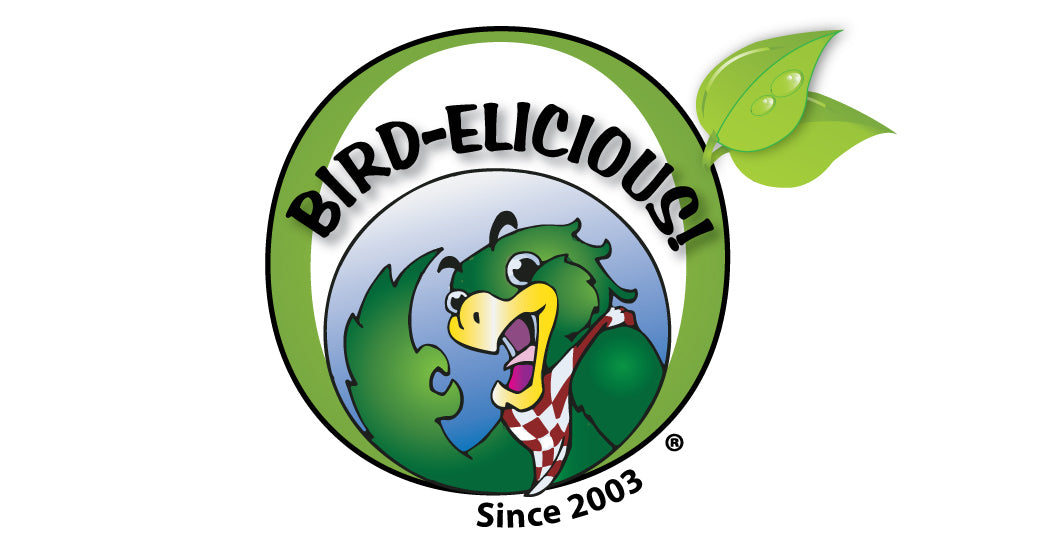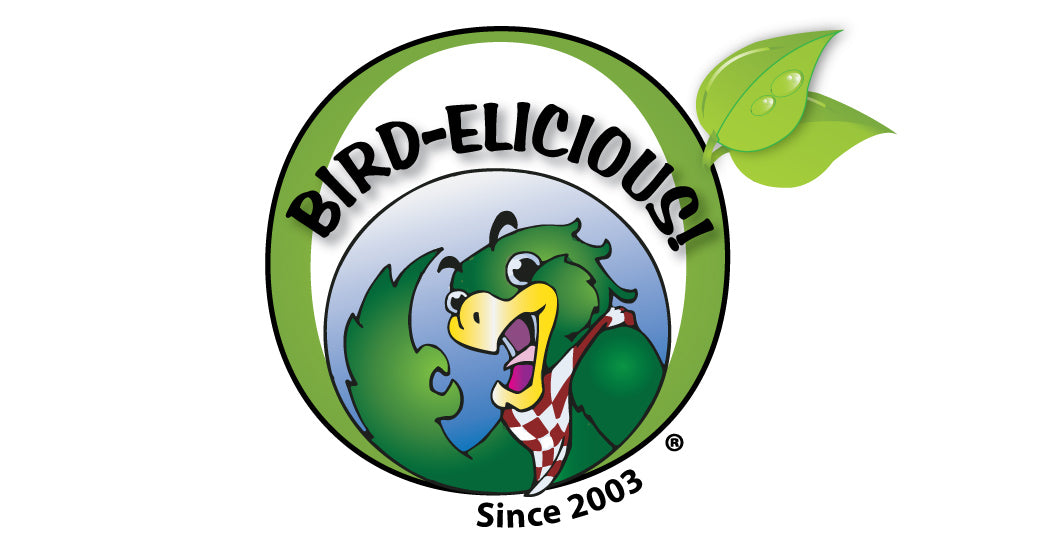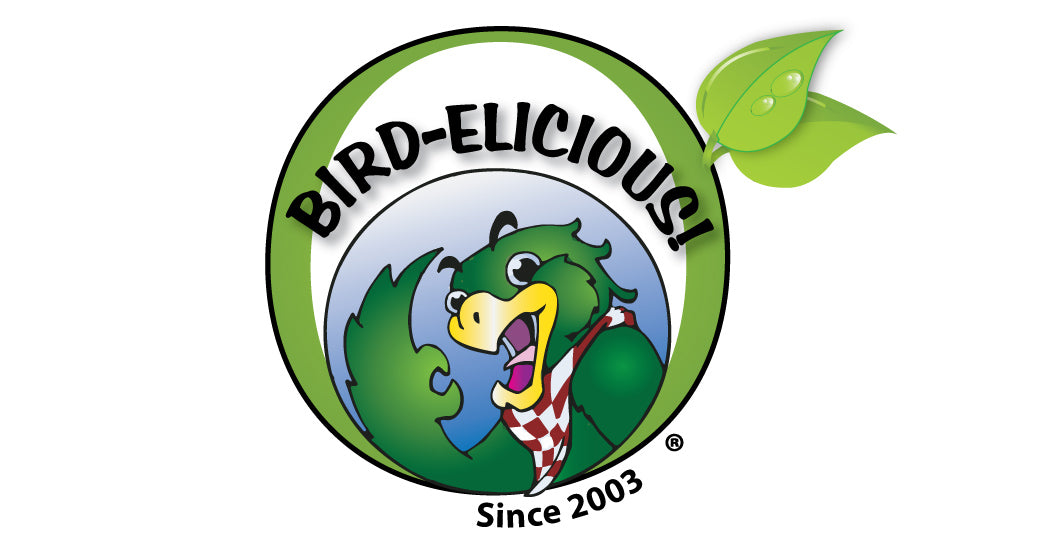1) Feed raw, not cooked foods - always. Cooking destroys vital, original nutrients such as digestive enzymes, fatty Omega acids and vitamins. We can make sure all raw foods are nutrient-dense simply by feeding raw, sprouted to further activate enzymes and eliminate phytates, or dehydrate. Freezing is not recommended. See this link:
http://www.rawfoodexplained.com/selection-and-storage-of-foods-part-i/does-freezing-harm-foods.html
2) Do not feed botanically classified vegetables due to the high cellulose content.
Parrots do not have ceca, a small organ designed to process cellulose into a liquid that can be absorbed into the metabolic system. Cellulose is an indigestible insoluble fiber that acts as a laxative that leaches nutrients out of digestive tract as it passes through. Therefore the very nutrients botanically classified vegetables deliver are literally excreted from the digestive tract from the scrubbing by the cellulose.
3) When feeding starchy foods such as grains and legumes feed them in moderation and always sprouted. Sprouting activates the digestive enzyme "amylase" which is the enzyme necessary to break down the starch for complete digestion and absorption. Parrots do not produce amylase in their mouths like humans do. Feeding diets high in starch potentially leads to avian diabetes due to the fact that a parrot's system doesn't produce amylase until further down in the digestive tract near the pancreas in the endocrine system. Feeding "dead" starches without "live" amylase in those vegetables places a strain on the endocrine system causing the over-production of insulin. When this happens on a continuous basis "insulin resistance" or diabetes may occur.
4) Certain food combinations need to be observed in order to prevent certain disorders and/or infections. This is because different foods digest at different speeds/rates. For instance melons digest faster than any other food due to the high moisture content. If they are eaten with other foods that digest at slower rates the other foods begin to ferment and actually sour before they can be thoroughly digested causing yeast growth. It is not usually sugar that cause yeast growth, but the wrong combination of foods in the digestive tract at the same time.
5) Certain foods should not be fed to feather destroyers due to their high sensitivity to histamines and salicylates. While each bird is unique there are some commonalities among all birds. I will be writing about this in my second book, but we can discuss this to a limited extent in our group here.
6) Finally remember that there are certain base ingredients that must always be added to any recipe to provide a well-rounded diet:
Protein:
Exotic birds don’t process protein in the same way mammals’ process protein. They utilize protein from plants much more efficiently that’s why they can consume far more fruit and plant matter than animal matter and still maintain their protein levels. Still, they do need some amount of animal protein in their diets.
Let’s begin by making sure adequate “animal” protein is in their daily diet. While African Greys do not produce “chitinase” in order to break down chitin from insect protein, they can still have a limited amount of insects in their diet. I prefer to use dried meal worms in my birds’ diets. These supply protein, fat for energy and many of the “B” vitamins. I also like to use pasture-raised, hard-boiled egg whites. The egg whites are especially good for African Greys since they cannot eat as many meal worms as other species of exotic birds.
By making sure an average-sized bird, weighing approximately 425-550 grams receives 25 grams of meal worms will supply about 12 grams of protein or 1 whole medium egg white will supply about 12 grams of protein.
Dietary Fat:
Exotic Birds probably need dietary fat as much or more than most living creatures for the amount of energy they use due to their high metabolism. Most of their energy requirements come first from dietary fat and second from the carbohydrates they consume. For this reason they require high quality dietary fat in their diet on a daily basis.
I like to use a combination of dietary oils for their fat requirements mainly organic flax seed oil and hemp seed oil at a ratio of 2 to 1. This ensures they receive adequate Omega 3s plus the GLA from the hemp oil that aids in the delivery of the Omega 3 to the brain. Without the GLA from the hemp oil the Omega 3 will not cross the blood brain barrier when using plant-based fats. I only use Barleans flax oil and HempOilCan from Canada. If an average-sized bird of 425-550 grams receives at least 1/8 tsp of this ratio of oil per day you can be sure you bird is receiving adequate dietary fat.
In addition I like to add miniscule amounts of krill oil from the Antarctic. This marine source of Omega 3 does not require GLA to cross the blood barrier. In addition it is high in beta-carotene and astaxanthin an extremely powerful antioxidant. I would only add one drop per day, no more of krill oil to any bird’s diet because it is so very powerful. I only use Mercola krill oil because of the manner in which it is produced and the type of capsule it is encased it, a fish oil capsule.
Now is a good time to bring of the topic of feeding nuts. I limit the amount of nuts I feed to birds simply because they are extremely high in Omega 6s which are considered inflammatory. Gram for gram they simply do not supply the amount of protein and Omega 3s worth the amount of inflammatory Omega 6s. Still nuts in limited quantities are a healthy treat for our birds. My favorite nuts are RAW organic almonds, not the pasteurized version. I like almonds because they are high in calcium. To increase the nutrition, and eliminate the phytates that bind the calcium be sure to soak them overnight and then rinse them food grade hydrogen peroxide, then dehydrate them for 24 hours at 115 degrees. You can buy the food grade hydrogen peroxide here: http://the-living-earth.myshopify.com/products/498 . You will need to dilute the 35% to 3% by using 1/8th cup of the peroxide to 1 gallon of water.
My other favorite nut is the organic macadamia due to the high oleic (Omega 9) content. It’s difficult to find raw macadamia. The container may say “raw”, but doubtful they really are.
Carbohydrates:
Carbohydrates are the secondary source of energy for our exotic birds. They are additional “quick energy”. They serve a very necessary part of our birds’ diet, but the right kind of carbohydrates must be fed. Botanically classified vegetables are not the right kind due to the fact they are high in cellulose fiber that acts as a laxative leaching nutrients out of our birds’ short and narrow digestive tract. Our birds require foods that deliver dense nutrients; nutrients that remain in their digestive tract instead of flushing right back out due to their high metabolism.
Carbohydrates that contain pectin and hemicellulose are the kind of fibers that deliver nutrients and gently flush toxins without stripping nutrients from our birds’ digestive tract. The kinds of carbohydrates that contain these fibers are fruits, berries and tender greens. The absolute best kinds of fruits are tropical fruits like they would find in their indigenous regions such as papaya, mango, pineapple, banana, and persimmon. Other more exotic fruit too that are a little more difficult to find in our stores, but occasionally we can find them. Berries are a good choice as well because they at least mimic the kinds of foods our birds would find in the wild. The kinds of tender greens we should feed are parsley and cilantro. Many of the other greens are too high in cellulose. Even arugula and kale are too tough. Dandelion greens are okay. Watercress, no.
The veggie-like fruits are good such as bell peppers, zucchini, okra, and even on limited occasion organic corn and peas. Every so often other squashes like butternut, pumpkin, and the other winter squashes, but not on a regular basis due to the fact they are very high in starch. Starch should be fed only in its “living” state.
Regarding feeding starch in its living state: sprouting is an excellent way in which to feed carbohydrates to our birds ensuring they receive only the best of nutrition coupled with hemicellulose fiber. When we feed sprouts that are “just barely sprouted” the plant doesn’t have time to produce cellulose and when the tail is just barely started is when “amylase”, the digestive enzyme necessary to break down the starch in the seedling is present. This is very important because birds do not produce amylase in their mouth like humans do. When we feed starch to our birds in the forms of “dead” starch, such as cooked grains and legumes we are placing a strain on their overall endocrine system raising insulin levels, potentially leading them down the road to insulin resistance or avian diabetes. When we feed “living” starch, such as sprouts the amylase is already present at the beginning of the digestion process so less strain is placed on their endocrine system.
Carbohydrates is one category of food we can feel free to feed as much as our birds want to eat because our birds are classified as frugivores/herbivores; they thrive on healthy carbohydrates!
Vitamins:
If we are feeding a well-rounded diet it probably will not be necessary to supplement with vitamins. In certain, specific cases I will add vitamins, but I like to use “whole-food” vitamins, not synthetic vitamins when I find them necessary to add to my recipes.
The one thing we need to remember though is that when we cook any food at all we are destroying the vital original vitamins, we just are! To add insult to injury, when we feed botanically classified vegetables listed below we are literally stripping the nutrients right out of our birds’ digestive tract due to the high cellulose content acting as a laxative.
Botanically classified vegetables:
• Broccoli
• Cauliflower
• Potatoes
• Yams
• Sweet Potatoes
• Spinach
• Kale
• Lettuce
• Brussels Sprouts
• Asparagus
• Celery
• Cabbage
• Artichokes
• Borage
• Radish
• Beets
• Carrots
• Turnips
• For a more complete list actually Wikipedia is fairly good source: http://en.wikipedia.org/wiki/List_of_vegetables
Minerals:
If we are feeding a well-rounded diet chances are most minerals will not need to be added to our birds’ diets.
Minerals do not degrade as quickly as digestive enzymes, fatty acids and vitamins in foods due to processing and storage. Minerals are just as vitally important in the health of our birds.
Calcium has been of major concern to the avian community. It is imperative to know that medical science is changing its viewpoint on the ratio of calcium to magnesium. No longer does medical science believe in the ratio of 2:1 calcium to magnesium. In fact they now believe that ratio may be contributing to heart disease and possibly even dementia. We are now told the new ratio is just reversed; 1:2 calcium to magnesium or at least 1:1. As it turns out magnesium aids in calcium absorption as much or more than Vitamin D; it also chelates the calcium from arteries so that no plaque builds up.
I do recommend adding a specific kind of calcium to our birds’ diets. Brazilian coral calcium due to the fact it is ionized. Calcium must be ionized in order for it to be completely absorbed and metabolized through the walls of the digestive tract into the metabolic system. Otherwise it ends up lodging in soft tissues and the walls of arteries. This causes disorders such arthritis and diseases such as arteriosclerosis. It can also cause kidney disease due to calcifications in the kidneys.
Along with coral calcium I recommend reliable bioavailable magnesium. Magnesium is absolutely required in order for calcium to be absorbed and metabolized. While aiding in the absorption of calcium it also chelates the calcium from soft tissues and arterial walls. It also breaks down any calcifications that could potentially form in the kidneys. Meal worms are a great source of magnesium. They are very high in bioavailable magnesium among other nutrients. The caveat here belongs to African Greys. They do not produce “chitinase”, the digestive enzyme necessary to break down the chitin in meal worms whereas other species do. However in the wild African Greys do consume insect protein, so it’s okay to feed meal worms in moderation to African Greys. If you see your AG begin to have loose droppings then you know you are feeding to many meal worms.
Zinc is necessary in cellular wound repair and division. Zinc is an important factor in the malabsorption syndrome, protein synthesis, cell membrane integrity and protection against free radicals. When I need to add zinc to a recipe I like to use zinc picolinate due to the fact that it is well-absorbed.
Selenium is an antioxidant and supports tissue elasticity. One of the primary problems in liver disease is the loss of elasticity due to scarring. Selenium aids in the prevention of developing scar tissue and may even help reverse it.
By the way, the above minerals are also great in treating congestive heart failure.
Water:
We would be remiss if we didn’t give great consideration to our birds’ drinking and bathing water.
Drinking water should have a pH of 7.2 to 8.0. This would probably be similar to what they would have available to them in their wild indigenous regions. It would help them maintain a slightly alkaline system that wards off disease. You can ensure drinking water pH of this level by purchasing Fiji or Evian water.
Bathing water should be more acidic to help soothe their skin and maintain their natural oils. I use Arrowhead natural spring water with a pH of 6.2 to 6.4. I use this to mist and bathe my birds.
I never use tap water even if it is filtered. I only use spring water because it contains the natural minerals. If you are fortunate enough to have a well or spring near you, great! Here is a link to find a spring near you: http://www.findaspring.com
Be sure you test for parasites before you offer it to your birds as drinking or bathing water. And test for the correct pH level.
If all of us will understand these very few and basic principles we will understand there are more "yeses" than there are "noes" when it comes to selecting foods for our birds!
©2015 Machelle Pacion TheBestBirdFood.com All Rights Reserved
This material may be shared. Please be kind enough to give credit to the author by copying the article in its entirety including the copyright. Thank you.




Leave a comment (all fields required)